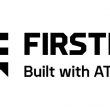Delivering more while consuming less
Radio manufacturers of all types are grappling with ways to effection to get the most out of every battery charge, as users demand more features, increased operational range and multi-band devices capable of operating on licensed and unlicensed frequencies. It’s a multi-front battle requiring engineering and design trade-offs to keep radios in operation as long as possible.
For example, builders of FRS/GMRS lower-cost radios find themselves in a yearly game of one-upmanship.
“The big marketing claim is range,” said Paul Optiz, product manager for Uniden, whose product line includes two-way and citizen band radios. “Most of our competitors are getting range mostly by power.”
Although more power means more range, it also means faster consumption. Consequently, Uniden takes a different approach to increasing range. “Uniden is a receiver company, so we approach it from improving the sensitivity side,” Optiz said. “If you have better ears, you don’t have to have as loud of a signal. Being able to have a more sensitive receiver gives us better range without having to use as much power.”
When they’re not transmitting or receiving, Uniden’s FRS/GMRS radios power down their radio frequency (RF) circuitry after several seconds of inactivity, waking up briefly about every 200 milliseconds to check for a signal or key press. If there is a signal or key press, the RF circuitry comes back up and stays until there’s another idle period.
Uniden also offers a patented option that lets users manage their transmit power. “There’s a push-to-talk option, but there’s also a boost option if they need the [full] transmit power,” he said. “That also achieves a better battery [life]. If this was a 200-dollar radio, we’d automate that, but with this class of goods, we’ll let the user decide.”
Land mobile radios designed for the public-safety sector have much more stringent performance requirements that impact their design, including some that detrimentally impact power consumption.
“What has changed over the past 10, 15 years is the baseband and controller side, moving from a pure analog to digital environment [featuring] controllers that have an RISC (resilient sound isolation chip) and a DSP (digital signal processor) in it,” said Joey Ooi, a senior engineer for Motorola. “Moving from an analog to a digital environment drives a lot of software, so power drain, memory controller and DSP are now the biggest change in consumption.”
The level of software usage impacts the amount of memory that’s required, the processor speed and, therefore, power drain.
Another impact upon power drain relates to the drive for spectrum efficiency. “As we move down to narrower and narrower bandwidths, the vocoder gets more complex,” Ooi said. “We go from several MIPS (millions of instructions per second) to tens of MIPS, and that has a direct impact on power consumption just to process the voice, not to support the rest of the functions.”
One advance that promises to help public-safety radio designers is the move into more predictable TDMA protocols.
“In today’s public-safety world, the protocols are non-slotted. That’s a lot more challenging [to power down],” Ooi said. “It can be done, but you have to be very careful in design so you don’t miss the mission-critical data.”
According to Ooi, a typical non-slotted portable radio can operate between 8 to 9 hours, while a more optimized design emphasizing power conservation can operate up to 10 hours. “Slotted protocols can show improvement up to 25 to 35 percent over non-slotted protocols because things are predictable,” he said.
Designing a portable radio to be more energy efficient involves the chip level, the software used and the protocol.
“There’s not one knob you can turn to solve everything,” Ooi said. “You want to make sure the processor can be scaled in terms of the frequency clock, can be scaled in terms of voltage. A lot of [battery capacity] is burned by external memory. You want to pick processors that don’t access external memory as much.”
Software design tools also impact power drain. “As software becomes more complex, people have a tendency to write software in higher languages. C++ has portability, but it has the drawback that the code becomes much larger than it should be,” Ooi said. “This has a significant impact upon [power] drain. About 20 percent of the code is used 80 percent of the time.”
Vocoders and other frequently used routines can use less power if they’re coded in assembly language rather than in C++ or another language.
Designers face similar challenges as they integrate Wi-Fi access and other features into wireless communication devices. Philips Semiconductor has been developing and building chipsets for both GSM cell phones and cordless connectivity standards such as Wi-Fi and Bluetooth for a decade, building cell phones able to operate for a week in standby mode.
Power consumption in dual-mode cellular/Wi-Fi devices is “a major issue,” said Dirk-Henning Braune, Philips Semiconductor’s vice president and general manager.
“You need very clever power-management units … [so] everything that is doing anything is switching off and not clocked, so you aren’t [running] chips that aren’t doing anything,” he said. “And you need to understand radio technology, how to make them highly sensitive so you can live with less output power back and forth, how to control them in certain ramp-up and ramp-down features.”
Software management and antennas also are important for dual-mode devices, according to Braune. “You need to understand and control the [software] protocol stack,” he said. “How you massage that, you can waste a lot of power or conserve a lot of power. Antennas with better gain give you much better power management. It’s like whispering, and you can still be heard.”
If Wi-Fi eventually does appear in a portable radio, it won’t be for surfing the Internet, Motorola’s Ooi said. “Let’s say you have a wireless LAN in your radio in the future; you don’t want to use it for browsing six, eight hours a day. It’ll just drain the radio,” he said. “A wireless LAN is good for uploading and downloading information.”
Consequently, Wi-Fi would be useful for short bursts of information, such as very quickly downloading radio parameters and frequency schedules into a portable radio before it went into the field. GPS would be another application where intermittent use, “say every five to ten minutes,” will likely be necessary to conserve battery life, Ooi said.
Beyond Wi-Fi and GPS, other applications that may end up competing for power in future portable radios include Zigbee, a low-power, low-data rate (20 kb/s to 250 kb/s) protocol designed to operate in several bands, including 2.4 GHz. In addition, personal wireless networks based on Bluetooth or ultrawideband technology could support wireless microphones and earphones.
Power savers
UNIDEN FRS/GPRS RADIO HANDSET
Power management optimization features
- Sensitive receiver
- Power-down RF circuitry on idle
- 200 ms “wake-up” to look for transmission activity
- Boost button for full transmit power
PHILIPS DUAL-MODE GSM/WI-FI HANDSET
Power management optimization features
- Switch off everything not in use
- Uses more sensitive receivers
- Tightly coded software
- Uses antennas with better gain
MOTOROLA PORTABLE HANDSET
Power management optimization features
- CPU, DSPs scalable in terms of frequency clock, voltage
- Avoids using external memory
- Programmed in assembly language for frequently used features
- Moved to TDMA for better predictability

















